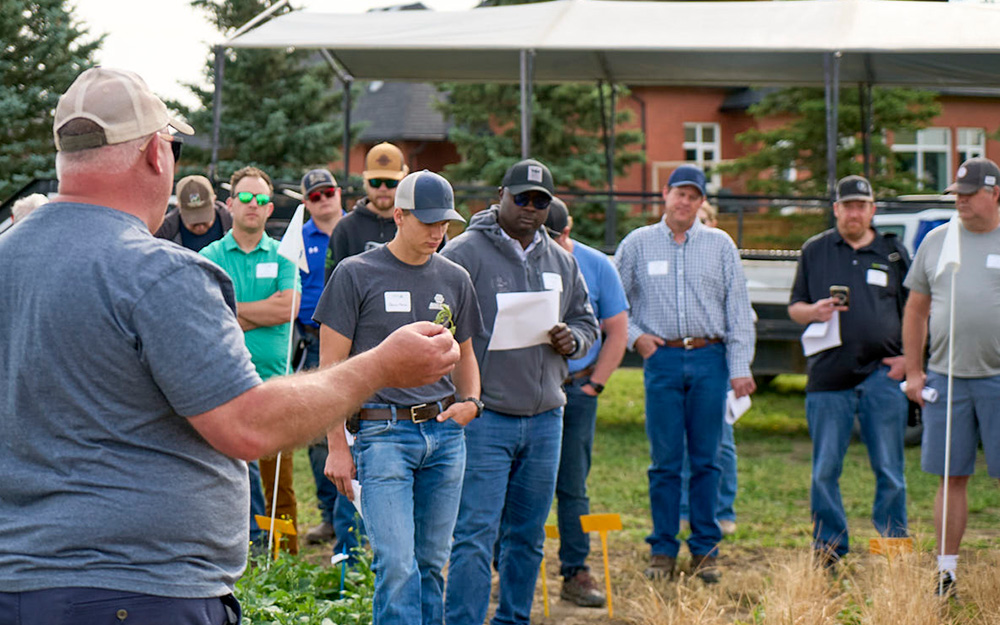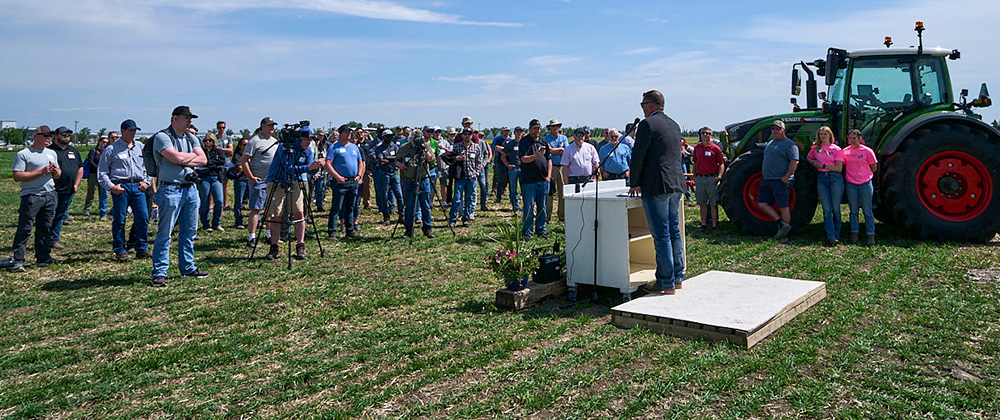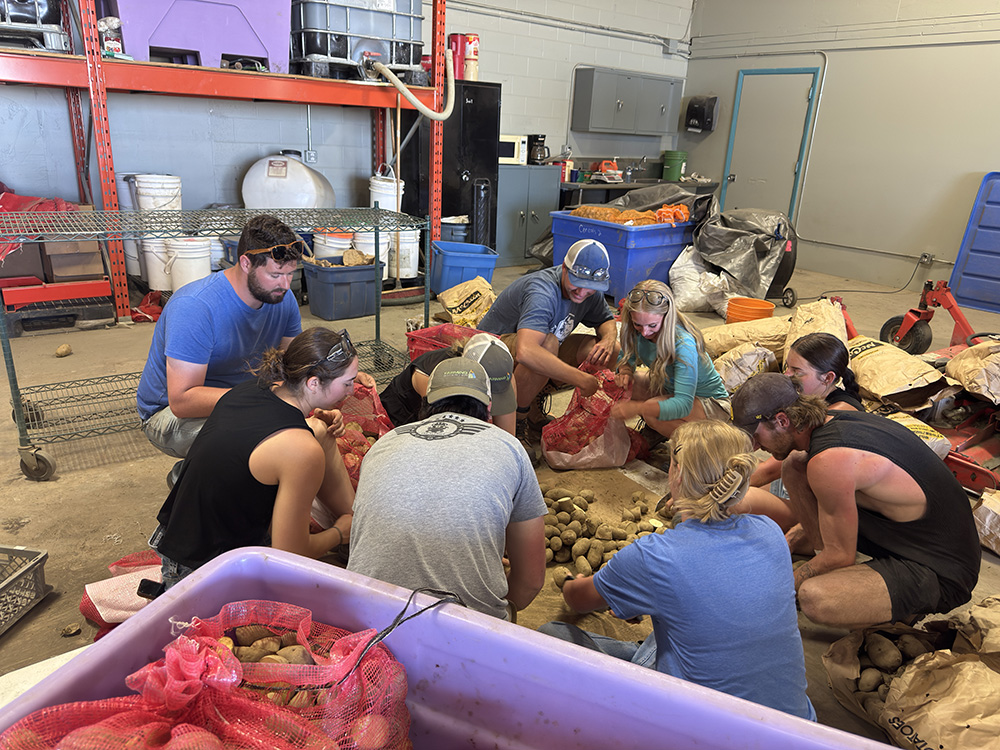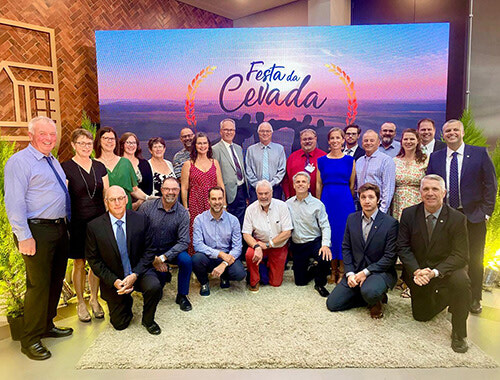By Tim Parent, Rural Roots Canada
After a lengthy stretch of ongoing global uncertainty, rapid change, and organizational growth, Farming Smarter is shifting its focus to one of agriculture’s most vital assets - people.
After completing its 2020-2024 strategic cycle, the research organization is rolling out its newest strategic plan, emphasizing relationship-building, science that benefits farmers, and a renewed commitment to connecting with the agricultural community.
|
|
|
Farming Smarter dedicates the next five years towards returning to the industry's roots, replacing the modern emphasis on digital agriculture with farming's most important asset - people. |
“When we look at our previous strategic plan and what we achieved, we were happy and impressed with the successes that we had over the previous five-year plan,” says Jamie Puchinger, Assistant Manager at Farming Smarter. “So, when we looked at creating the next five-year plan, it was more about finding that next level of what we can achieve as an organization.”
The previous five years were marked by major disruptions like the COVID-19 pandemic, global instability with the Ukraine-Russia war, and even the lingering effects of Brexit, all of which presented logistical challenges for farmers. It forced the organization to make some significant adjustments to its strategy, which has become its most valuable tool. For Farming Smarter, strategic planning isn’t something that’s done once and then forgotten.
“The amount of man-hours we put into building the plan, the thought process, and then how we implement those efforts is the single most important part of our organization,” says Ken Coles, Farming Smarter’s Executive Director.
The 2025 plan builds on lessons learned during the previous cycle but with a stronger emphasis on people.
Coles says the team wanted to recognize the importance of human connection in agricultural advancement. He points to an eye-opening experience they had with a group of summer students.
“We had 15 summer students last year,” he explains. “We got to see how passionate they became about what we do. The influence we have on them cascades out into the industry. We had three of them actually switch career paths after just one summer of work with us, so it was an a-ha moment. We’re impacting the industry from within.”
Puchinger agrees, noting that the organization is stepping away from what she describes as the overly technical language of knowledge transfer and digital agriculture, and instead returning to the roots of agriculture extension, including connection and meaningful communication. “Governments and institutions often dictate the terminology, and it’s moving away from people. They don’t have people dedicated to connecting. But that's one of the things we know is important: connecting people not only with us and the science researchers but also with each other. We see the value that that brings in a number of ways.”
While the development of its new strategic direction was done internally, it relied on the input given to it from external sources. The plan, more than a year and a half in the making, drew on conversations with researchers, clients, board members, and partner organizations. “Part of our success as an organization is the culture that we’ve built both internally and externally,” says Coles. “We took an iterative approach. The feedback we got, both formal and informal, helped shape what we’re doing. We also looked at what others are doing across the sector to make sure we’re aligned and forward-thinking.”
Though the plan features four primary goals, Coles and Puchinger both stress that its core message is about impact. Whether it’s research, conservation, education, or collaboration, each goal is meant to support farmers and build a more resilient, human-centred innovation system in southern Alberta.
|
|
|
The Farming Smarter Field School brings members of the agriculture industry out to the field for a hands-on opportunity to learn about the latest updates in agronomy research and technology. The 2025 event connected over 100 stakeholders with Minister of Agriculture and Irrigation in Alberta, RJ Sigurdson, who announced a multi-million dollar grant for research organizations throughout the province including Farming Smarter. |
Looking forward, Farming Smarter sees both challenges and opportunities tied to the same key element: people.
|
|
|
Each summer Farming Smarter hires a handful of students to spend the summer working in agriculture research, where they develop new skills and relationships through the close-knit work environment. |
“People are the solution, but also the barrier,” Coles says. “It could be an unwillingness to change, or government people and other organizations with competing priorities. Politics and policy are big. So, building the relationships and the stories that allow us to access that resources, capital, or whatever may be needed to do the work has always been a challenge.”
That doesn’t diminish their excitement, however. “I’m even more excited about this new strategy that we’re launching because I think it just shows the professionalism that we have as an organization,” says Coles. “Clear guidance and effort is being put in. This is what guides us and, in turn, has impact and value to the industry.”
“The culture we’ve created here at Farming Smarter, we just want to share that,” adds Puchinger. “We want to share it not only with other people who want to work here and, in the industry, but also want to connect with us on a personal level, as well.”






